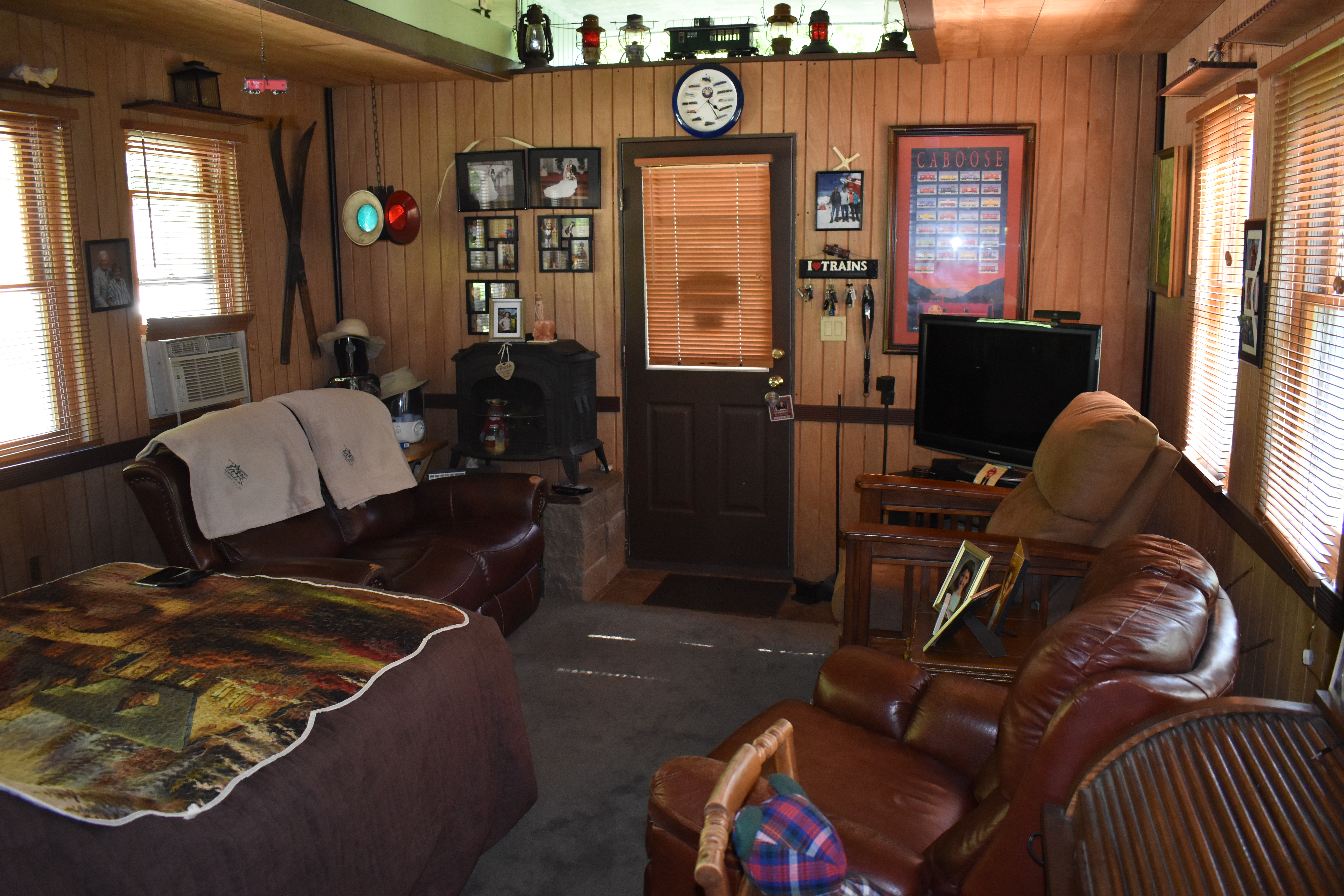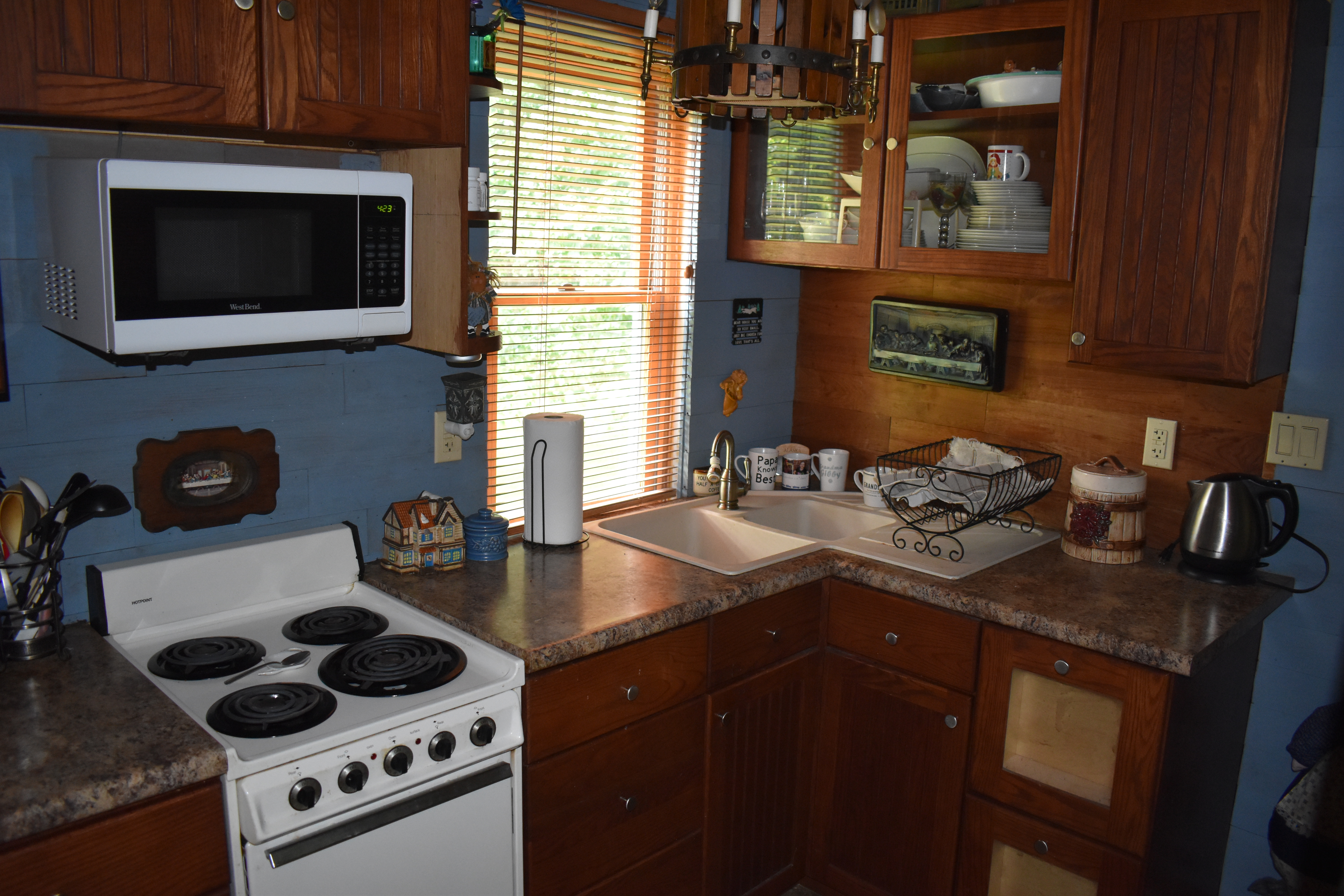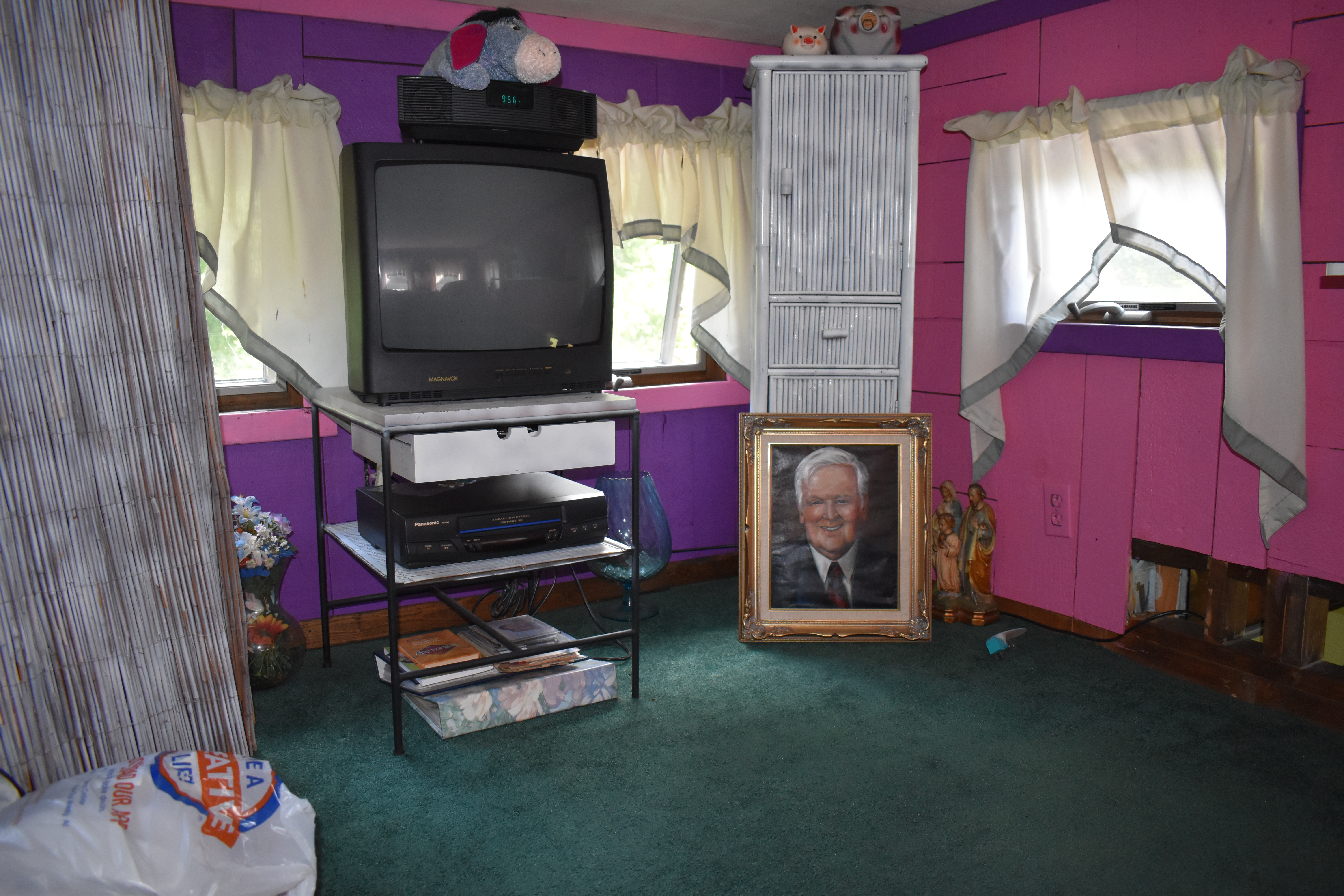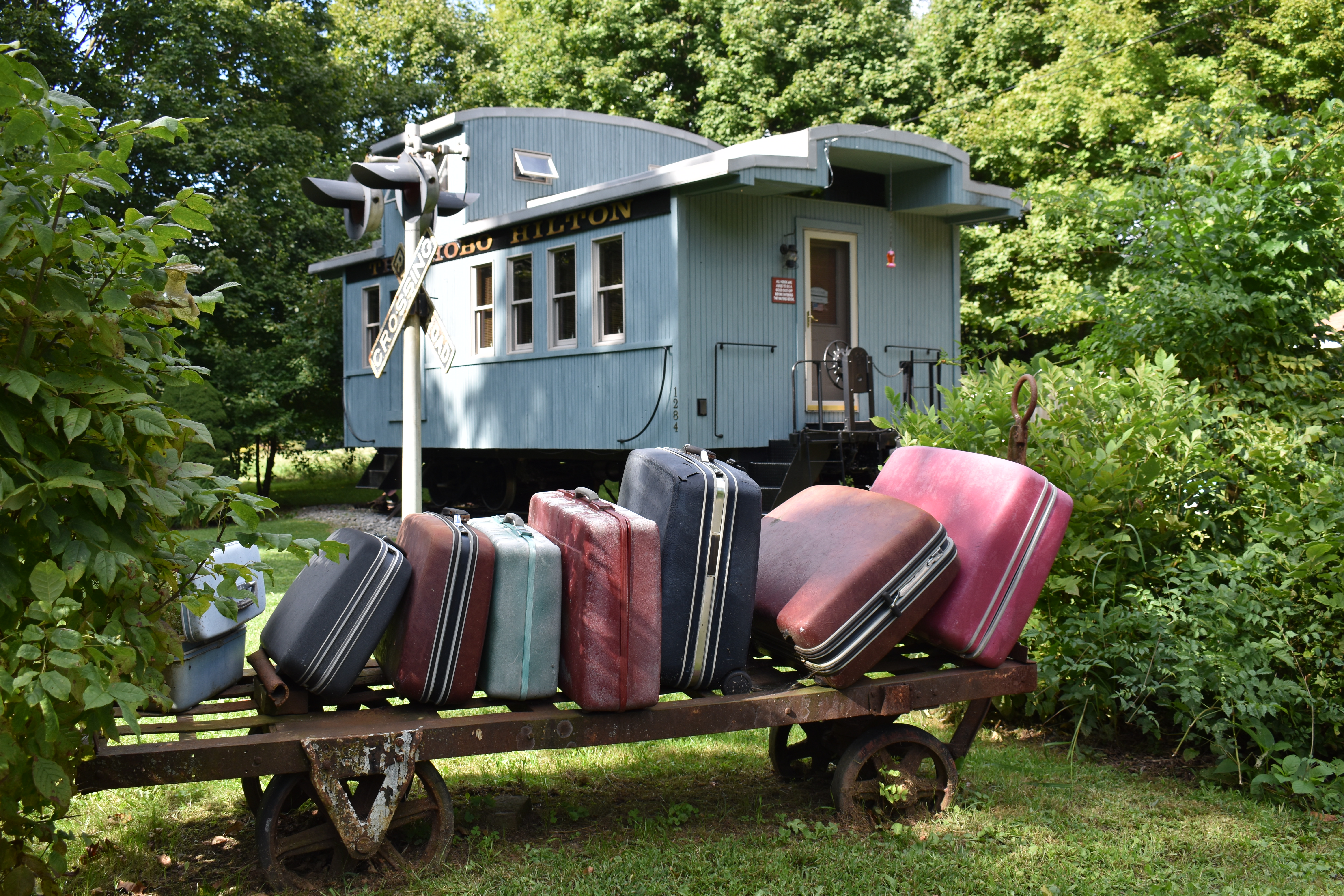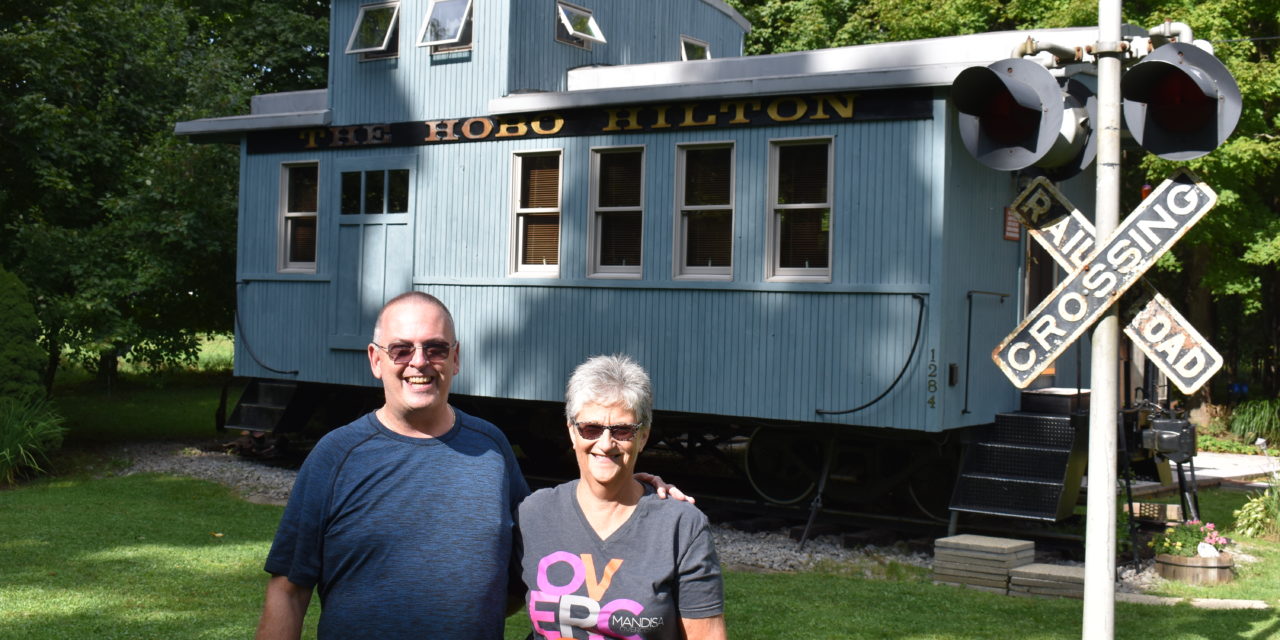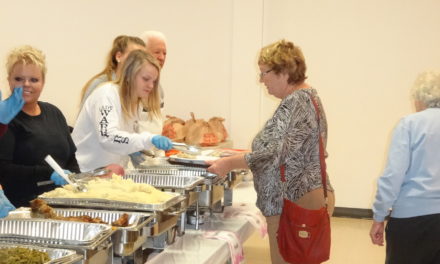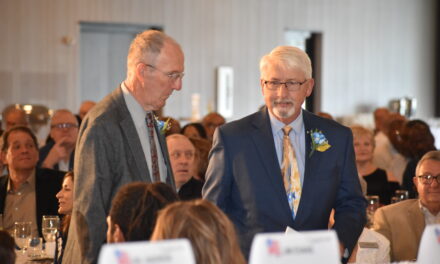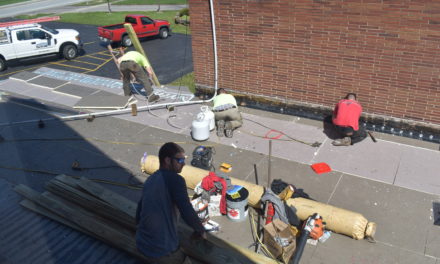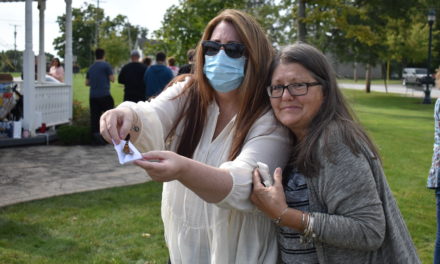Bob Murrell had property – 13 vacant acres on Yankee Run Road in Masury – and a vague notion of doing something with it; maybe, building a house.
In about 1999, while he was in Mahoningtown, an old railroad town outside of New Castle, the notion started to get more concrete.
“I saw this little caboose,” Murrell said. “I thought, ‘I’m just weird enough I can probably make a house out of something like that.’”
That dream became the tiny house known as the “Hobo Hilton” that Murrell and his wife, Lori, live in.
Bob conceived his tiny house years before the tiny house craze, and he was ridiculed often for his idea. Still, he stuck to the dream, his research including staying overnight in cabooses in Titusville. He still had not figured out exactly what he wanted to do when he saw an ad in a magazine.
 “This guy was advertising a chassis,” said Bob, a bus driver for Mercer County Community Transit and Shenango Valley Shuttle Service. “Just the chassis, and the track. Henry, Ill. Come get it, as is, where is.”
“This guy was advertising a chassis,” said Bob, a bus driver for Mercer County Community Transit and Shenango Valley Shuttle Service. “Just the chassis, and the track. Henry, Ill. Come get it, as is, where is.”
Bob had the Toledo, Peoria and Western Railway chassis trucked back to Masury.
“It sat from ’99 to 2003,” Bob said, noting that Lori, a bus cook for Hermitage School District, entered the picture in 2001. “No banks would finance it. Didn’t know what we wanted to build, anyway, until I saw that little toy train in the Ross Park Mall. I thought, ‘That’s the design we’re gonna build.’”
He chose a high-ceiling model with flat sides and a cupola.
“I found Dennis Smith and Rudy Byler.” Bob said. “Dennis Smith, Rudy Byler and me did all the drawing out and building.”
Building small did not reduce the headaches associated with a building project. In fact, it increased them.
“They wouldn’t give us the electric until we could demonstrate that it would not blow over in 90 mph winds,” Bob said. “I couldn’t prove that because I’m not an engineer, so, we had to go out and find one, which took probably a year.”
The caboose had to be anchored to concrete pillars in the ground.
Because Bob was building in Brookfield Township, which does not have zoning, he assumed he could build whatever he wanted.
“Trumbull County had other ideas,” Bob said. “We needed an architect to approve the plans, because we moved in without permission to build it.”
Because of building codes, Bob had to nix a wood-burning stove, move electrical receptacles that were too close to the baseboard heaters and install a back door because the side doors that would have adequately served a caboose were not sufficient for a home.
In the open floor plan of the caboose, you enter the living room from the front door, which bleeds into the bedroom, which bleeds into the office, which bleeds into the laundry room, which bleeds into the kitchen. There is a tiny bathroom with shower off the kitchen and a single closet. Train memorabilia and family pictures are the main themes of the decor.
A ladder takes one into the cupola, which has been painted pink and purple and decorated in princess regalia for visits by their 9-year-old granddaughter, Malia.
All told, it took more than $100,000 to build a 390-square-foot home. “A lot of things had to be specially made,” Lori said. “You can’t just walk into Lowe’s and buy our shower.”
A tiny house is more than a home: it’s a lifestyle. The Murrells can’t own much because there’s no place to put it. “None of it means anything,” Lori said of her philosophy of possessions.
The tiny house also impacts interpersonal relations.
“Negotiations get done very quickly in a small house,” Bob said. “There’s no room for dissension.”
The couple “learned to be happier with less,” Bob said, and focus on “experiences” such as travel.
“I don’t think we look like we’re hurting too much,” Lori said, noting the only time she wishes she had more space is when she’s baking Christmas cookies. “We’re quite happy.”
